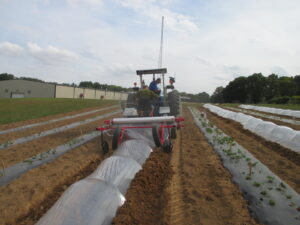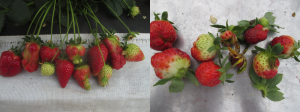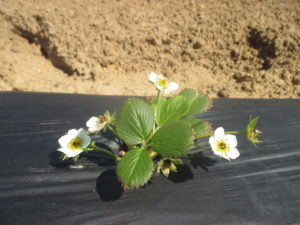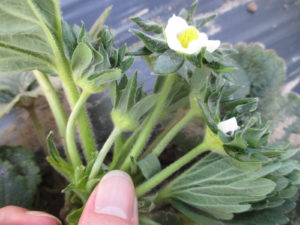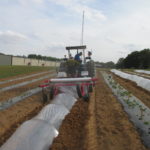Strawberries are primarily grown in matted row system in Indiana, in which bare-root strawberry plants are set in the spring. Runners are established. Fruit is first harvested in the second year and plantings are renovated each year for 2-3 seasons. Growers in the southern part of the state expressed interest in growing strawberries in plasticulture[Read More…]
Strawberries have rich flavor; sugar, acid, phenolic content, and aroma all together make the wonderful fruit. Many factors are assumed to affect strawberry flavor. Some are supported by scientific evidence, some may be simply people’s impressions. In this article, we discuss some of the factors that are more likely to affect strawberry flavor. Locally grown[Read More…]
This article discusses the abiotic factors that may cause deformed strawberry fruit. Unevenly developed strawberry fruit (Figure 1): Frost damage is probably the most common abiotic factor causing misshapen strawberry fruit. Temperatures lower than 30°F kill the pistil (female part) of strawberry flowers. Depending on the extent of the injury and the stage of fruit development.[Read More…]
Strawberries growing in the matted-row system are in the blooming stage. Open flowers cannot tolerate temperatures lower than 30°F (Figure 1). Strawberry growers should be prepared for the coming low temperatures this week. Row covers (Figure 2) can be effective in protecting strawberry flowers. In our earlier trial, 1.5 oz/sq row covers provided 4-6 degrees[Read More…]
Strawberries growing in the matted-row system are in the blooming stage. Open flowers cannot tolerate temperatures lower than 30°F. Strawberry growers should be prepared for the coming low temperatures this week. Row covers can be effective in protecting strawberry flowers. In our earlier trial, 1.5 oz/sq row covers provided 4-6 degrees protection and successfully protected[Read More…]
Spring weather is unpredictable. One of the major risks associated with strawberry production is cold damage in the spring. Open strawberry flowers can not tolerate temperatures lower than 30°F, popcorn stage flowers and tight buds may tolerant temperatures low to 26 and 22°F, respectively. If strawberries are in the early blooming stage, the damage might[Read More…]
At Southwest Purdue Agriculture Center in Vincennes, IN. We are conducting trials to evaluate annual plasticulture strawberry production systems. Here are the updates of strawberries from different production systems. In a high tunnel, harvest of fall-planted strawberries started in early April. Cultivars Sensation, Radiance, Ruby June were early cultivars; followed by Beauty, Fronteras. So far,[Read More…]
Warm temperatures this week greatly encouraged strawberry growth and development. Some of the early cultivars may have entered the open blossom stage especially if they are grown with the annual plasticulture system in southern Indiana. Open flowers cannot tolerate temperatures lower than 30°F, while popcorn stage flowers (Figure 1) and tight buds may tolerant temperatures[Read More…]
Strawberry production with the annual plasticulture system is successfully used in southern states. Plug plants are planted in fall and strawberries are harvested in spring the next year. The planting is usually not carried over to crop a second year. Compared with matted row system, annual plasticulture system has advantages such as easier weed and[Read More…]

